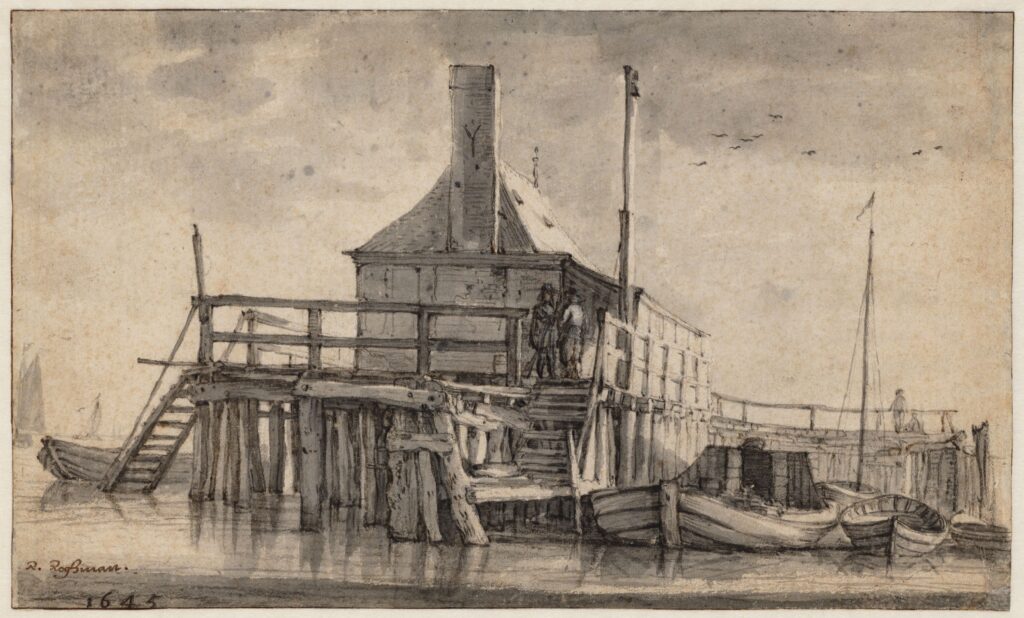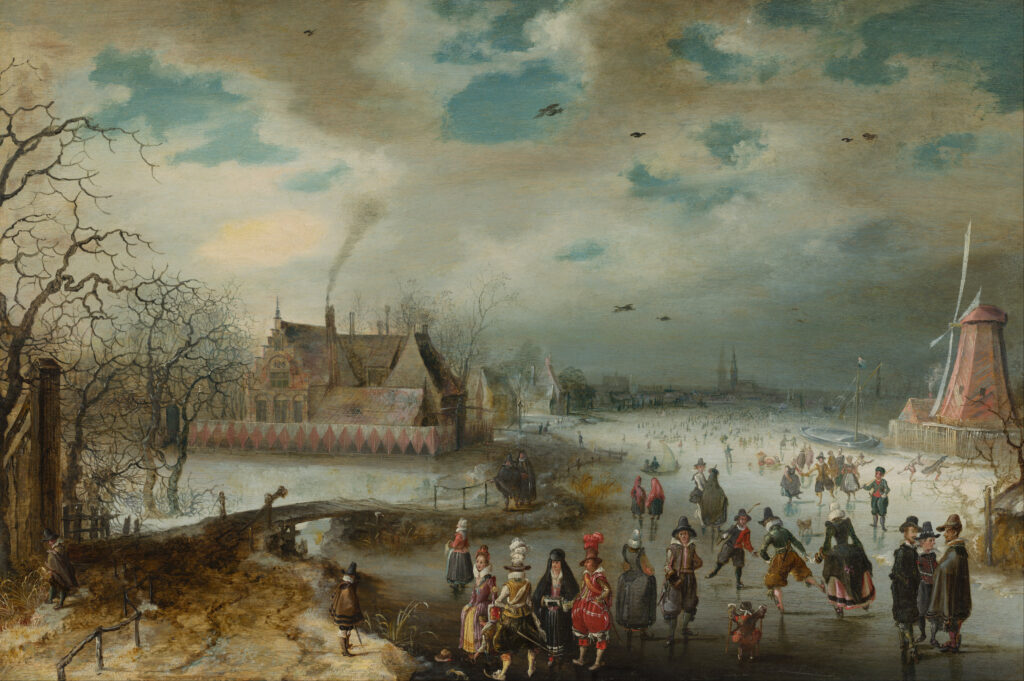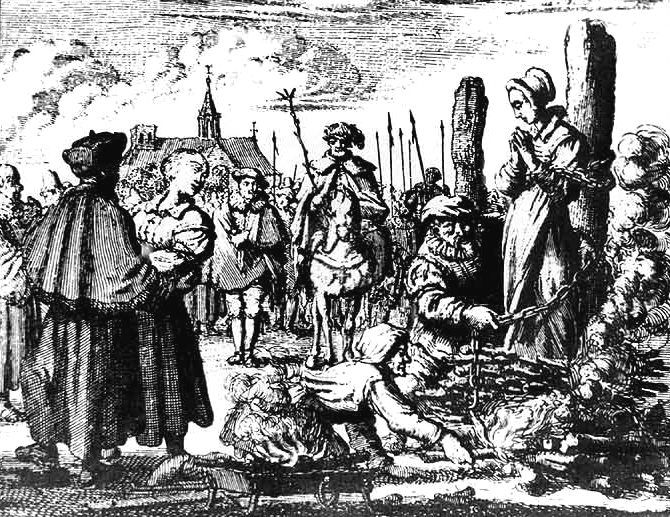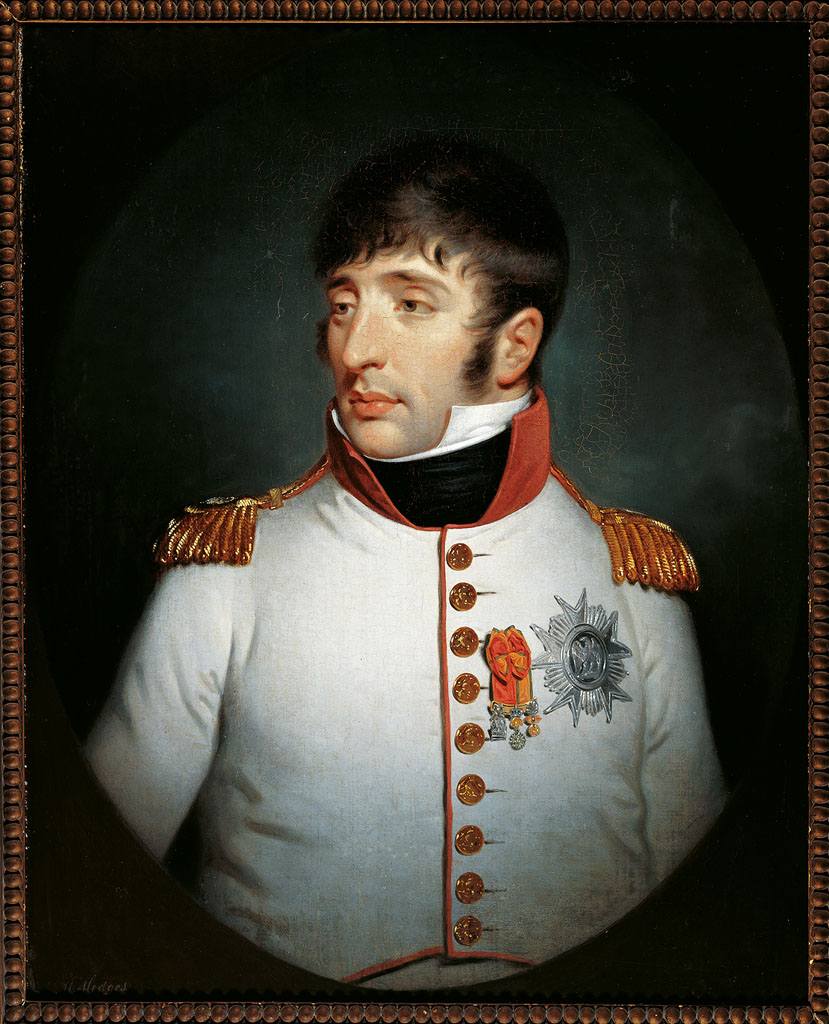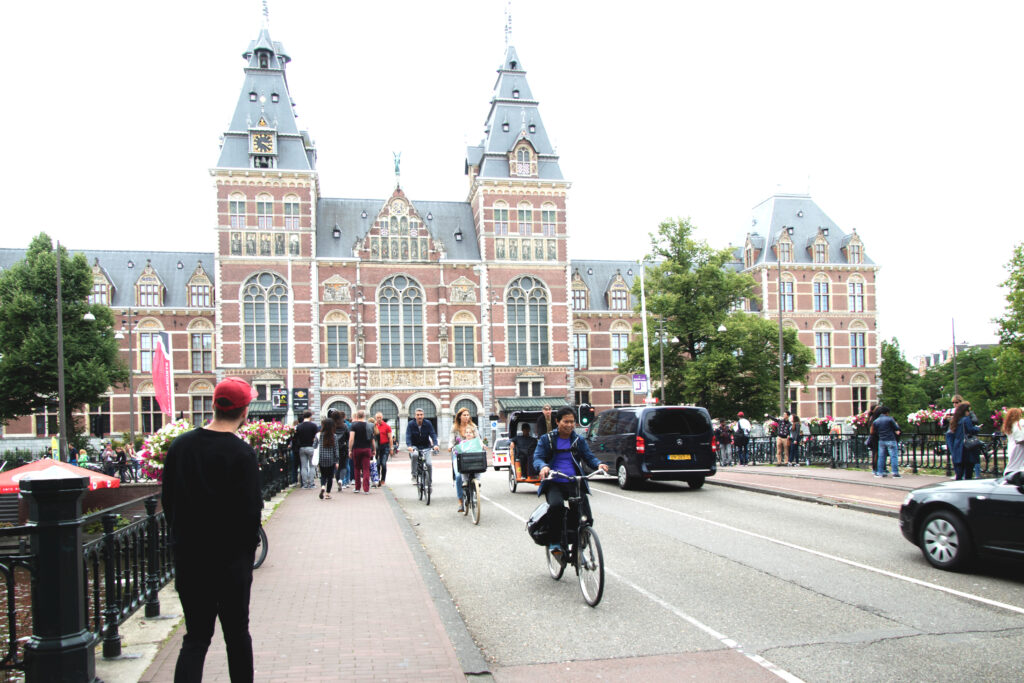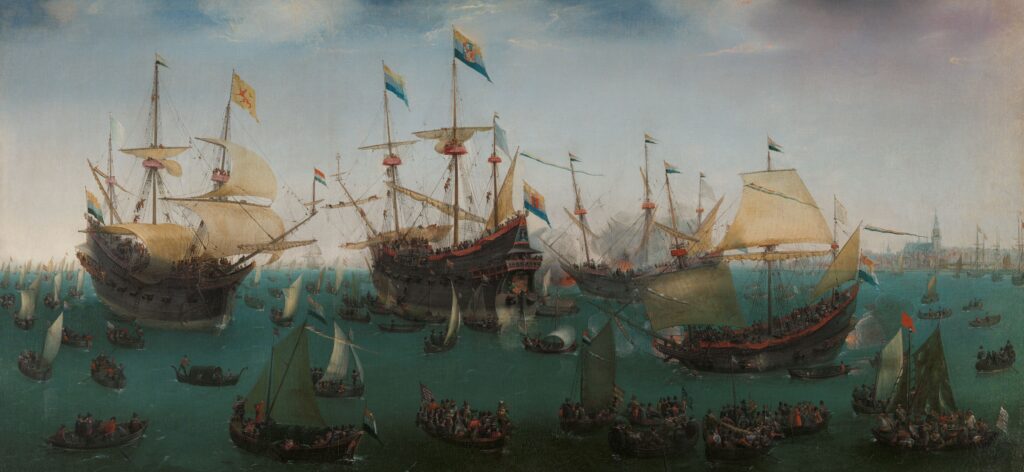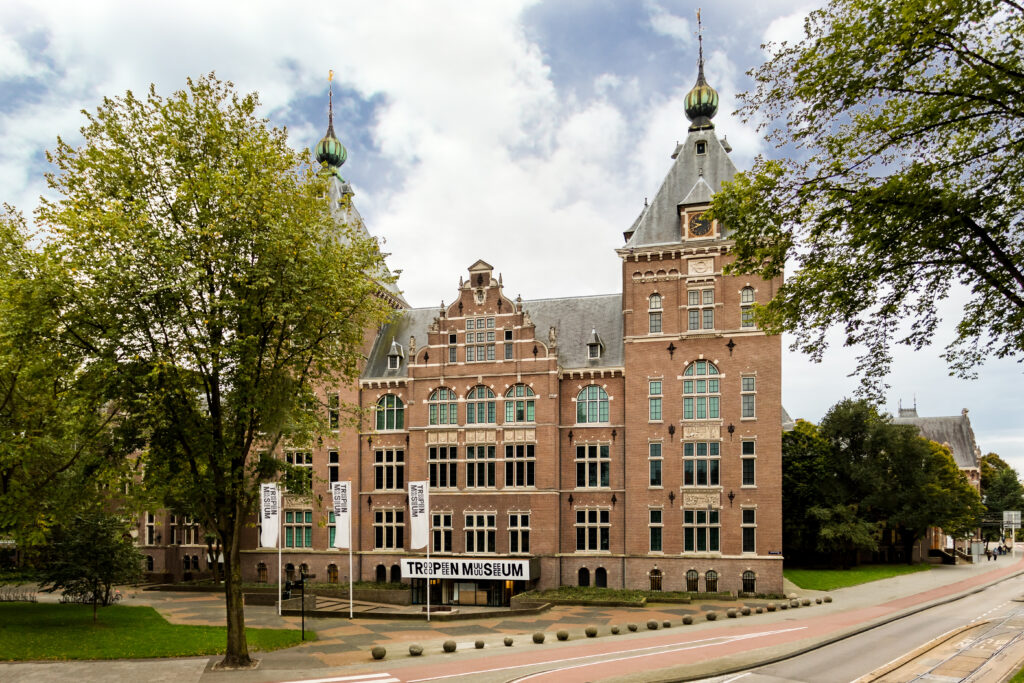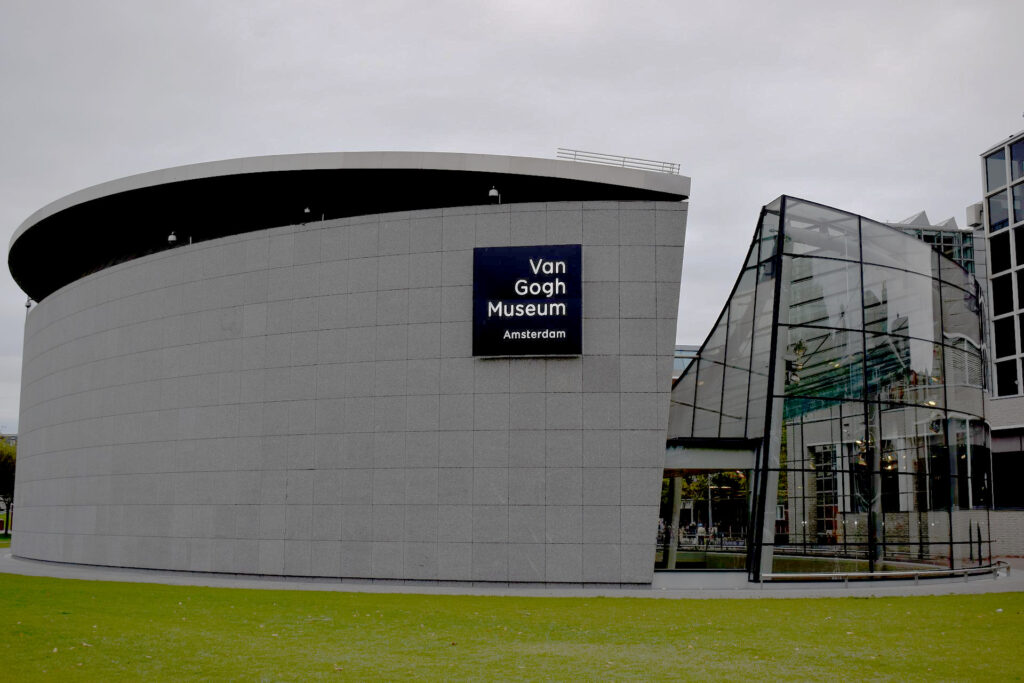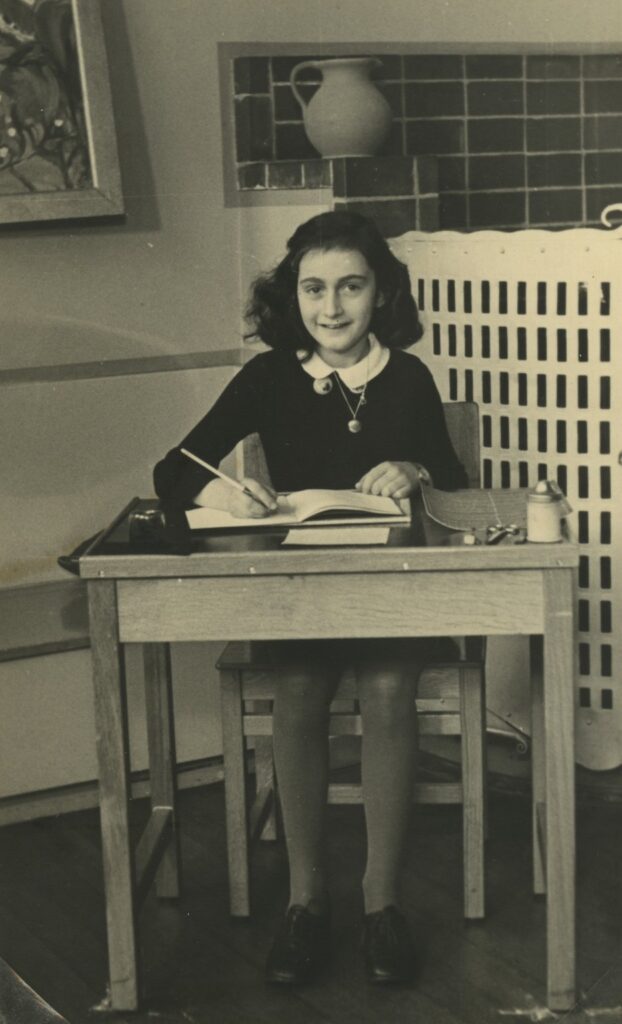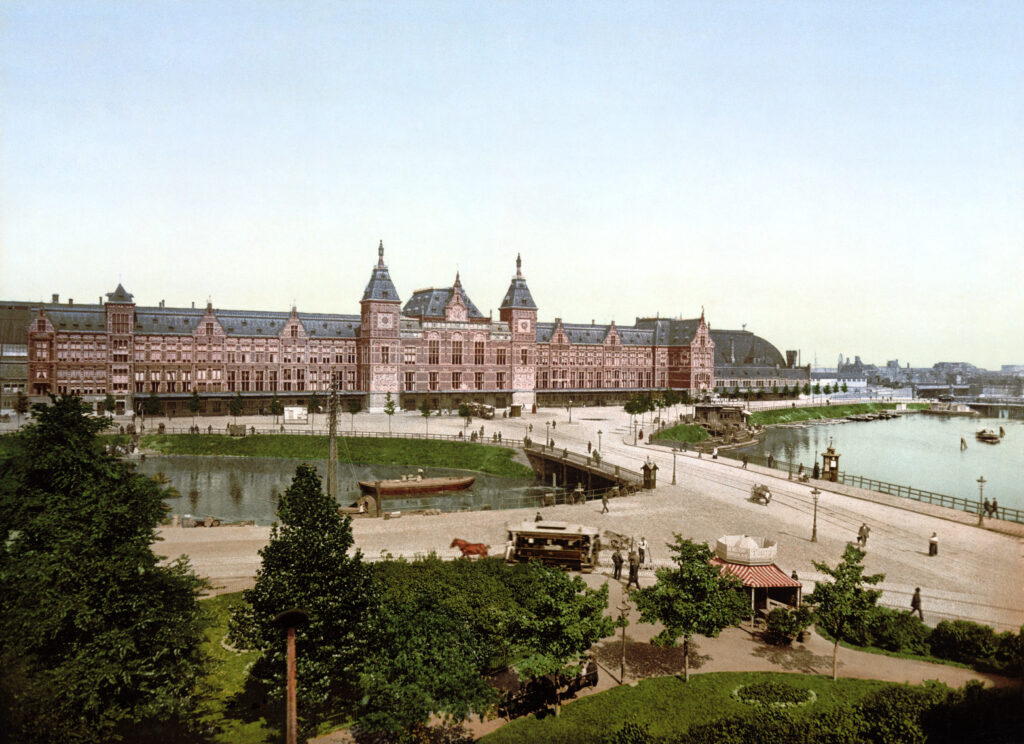AMSTERDAM
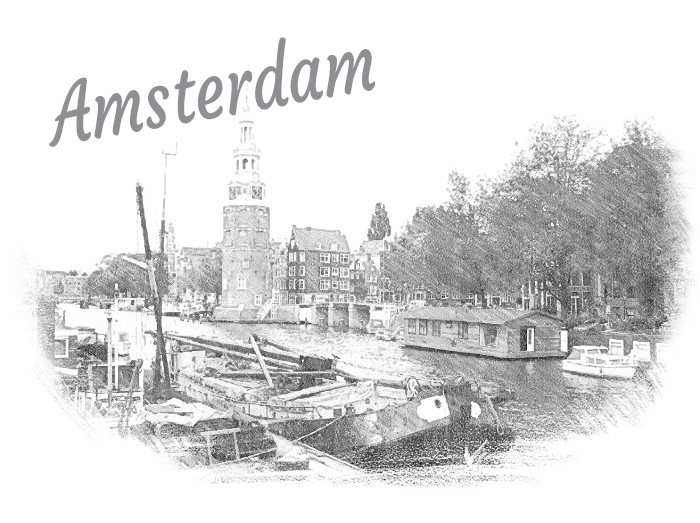
The Charming Capital of the Netherlands
Amsterdam, the capital city of the Netherlands, is a captivating and vibrant destination that effortlessly combines historical charm with a modern and progressive atmosphere. Renowned for its picturesque canals, world-class museums, and open-minded culture, Amsterdam attracts millions of visitors from around the globe each year.
The city’s iconic canal belt, a UNESCO World Heritage Site, is a testament to its rich history. Meandering waterways are lined with charming 17th-century buildings, creating a postcard-perfect backdrop for leisurely strolls and bike rides. Speaking of bikes, Amsterdam is a cyclist’s paradise, boasting an extensive network of bike lanes, making it an eco-friendly and convenient mode of transportation.
Cultural enthusiasts are spoiled for choice with an array of world-class museums, including the Rijksmuseum, Van Gogh Museum, and Anne Frank House, where visitors can delve into the city’s artistic, historical, and humanistic heritage.
But Amsterdam is not just about history; it embraces diversity and tolerance. The open-minded atmosphere is evident in its lively neighborhoods, diverse culinary scene, and flourishing creative community.
From the iconic Red Light District to the serene Vondelpark, Amsterdam offers something for everyone. Whether you seek the bustling nightlife or peaceful canal-side cafes, this city never fails to enchant its guests.
In conclusion, Amsterdam’s allure lies in its perfect blend of history, culture, and modernity. Its captivating beauty and progressive spirit make it an enchanting destination that leaves a lasting impression on anyone lucky enough to experience its charms.
Amstel and Dam
After several storm floods in the 12th century, of which the All Saints Flood in 1170 and the Sint-Nicolaas Flood in 1196 had a major impact, the Amstel came into open connection with the North Sea via the IJ and the Zuiderzee, causing flooding along the banks. increased. Dikes were subsequently built along the banks of the IJ and the Zuiderzee, as well as dams in the rivers that flowed into them. In the third quarter of the 13th century a dam was also built (under the current Dam) near the confluence of the Amstel and the IJ. The village grew into the town of Amsterdam, which became increasingly important from the 14th century due to its location on the Zuiderzee with connection by sea. Originally the river flowed into the IJ via the current Rokin and Damrak, now the Amstel ends in the center of Amsterdam at Muntplein. Via culverts under the filled-in part of the Rokin and the Dam, the water still flows via the Damrak into the IJ, although most of it is diverted via the Amsterdam canals. The Dam still attracts many tourists every day, who in turn attract pigeons.
BRUGGEN & SLUIZEN
De Bruggen van Amsterdam: Een Verbinding met Geschiedenis en Geluk
Amsterdam, een stad doorkruist door ontelbare grachten en kanalen, is beroemd om haar bruggen. Deze kenmerkenstructuren zijn niet alleen essentiële verbindingen voor verkeer, maar ook symbolen van de stad, beladen met geschiedenis en charme. De inwoners van Amsterdam koesteren een diepe waardering voor de Amstel, de rivier die het hart van de stad doorklieft. Elke brug over deze rivier draagt bij aan het unieke karakter en de schoonheid van de stad.
De Amstel: Een Levende Ader van de Stad
De Amstel, waarvan de naam zelf verweven is met Amsterdam, is de levensader van de stad. Deze rivier heeft niet alleen bijgedragen aan de economische bloei door de handels- en transportmogelijkheden, maar biedt ook een serene waterweg die het stadslandschap siert. Voor Amsterdammers is de Amstel meer dan een rivier; het is een symbool van hun cultuur en erfgoed.
Bruggen over de Amstel: Architectonische Meesterwerken
Er zijn talloze bruggen die de Amstel overspannen, elk met een uniek verhaal en ontwerp. Van de historische Magere Brug tot de moderne bruggen die ontworpen zijn om het hedendaagse verkeer aan te kunnen, elke brug draagt bij aan de rijke wandtapijt van Amsterdam.
De Magere Brug: Een Symbool van Romantiek
Onder de vele bruggen over de Amstel bevindt zich de Magere Brug misschien wel de meest iconische. De Magere Brug, oftewel “Magere Brug”, is een houten ophaalbrug die oorspronkelijk in 1691 werd gebouwd. De naam effectief naar de kleine deurgang die oorspronkelijk kenmerkend was voor de brug. In de loop der jaren zijn de brug meerdere keren gerenoveerd en verbreed, maar de charme en elegantie zijn altijd behouden gebleven.
De Magere Brug is vooral geliefd vanwege haar romantische uitstraling. Bij zonsondergang en in de avond, wanneer de brug verlicht wordt door duizenden lampjes, is het een populaire plek voor stelletjes en fotografen. Het is een plek waar mannen stil kunnen staan en genieten van het uitzicht over de rustige Amstel, terwijl de stad om hen heen tot leven komt.
De Betekenis van Bruggen voor de Amsterdammers
Voor de inwoners van Amsterdam zijn de bruggen niet slechts functionele structuren; ze zijn ontmoetingsplaatsen, monumenten en een bron van trots. Elke brug vertelt een verhaal, van het ingenieuze ontwerp tot de historische gebeurtenissen die zich daar herhaaldelijk hebben. Het onderhoud en de restauratie van deze bruggen worden dan ook met de grootste zorgvuldigheid uitgevoerd, om ervoor te zorgen dat nog vele generaties zullen dienen.
De bruggen over de Amstel zijn meer dan een middel om van de ene kant naar de andere te komen; ze zijn een integraal onderdeel van het leven en de cultuur van Amsterdam. Van de historische Magere Brug tot de moderne architecturale wonderen, deze structuren verbinden niet alleen de fysieke delen van de stad, maar ook de mensen die er wonen. Ze zijn een testament van het vakmanschap en de trots van Amsterdam, en ze brengen een gevoel van geluk en verbondenheid onder haar inwoners.
.


The origin of the coat of arms was unknown for a long time, but recent research has shown a possibility that the three crosses are derived from a historical North Holland legal ritual in which three crosses were drawn with chalk on the court table at the beginning of a court meeting and these were then the court meeting were again blotted out. Thus, the three crosses would represent legal certainty, and the black bar probably represents a court table.

Romeinen en de Ontstaansgeschiedenis van Amsterdam
Rond onze jaartelling speelde de Romeinen een belangrijke rol in het gebied dat we nu kennen als Nederland. Hoewel ze het Romeinse Rijk wijd verspreidden over Europa, kwam ze nooit verder noordelijk dan de Rijn. De uitgestrekte veenmoerassen en rietvelden ten noorden van deze natuurlijke grens vormen een ontoegankelijke barrière voor hun legioenen.
Toch was het bereikbare gebied, waar nu Amsterdam ligt, niet geheel verlaten. Hier stroomde al de rivier de Amstel, een waterweg die in de toekomst een centrale rol zou spelen in de opkomst van een van de meest invloedrijke steden van de wereld. Langs de oevers van de Amstel hadden zich al vissers en rondtrekkende jagers gevestigd, het gebruik van de natuurlijke rijkdommen van het gebied.
Deze vroege bewoners leefden in eenvoudige omstandigheden. Op de plaats van vaste plaatsingen bouwen ze vaak boomhutten om te overnachten en zich te beschermen tegen de elementen. De overvloed aan vis in de rivier en wild in de blijkende bossen voor voldoende voedselbronnen. Hun sterkte markert het begin van een lange en complexe geschiedenis die uiteindelijk zou leiden tot de stichting van Amsterdam.
De Romeinen hebben ondanks hun grens nooit invloed kunnen uitoefenen op deze regio. Hun interactieve infrastructuur, zoals wegen en aquaducten, bereikt de natte, onherbergzame gebieden boven de Rijn niet. Hierdoor duidelijke de vroege bewoners van de Amstel gevrijwaard van directe Romeinse invloeden en ontwikkelingen zij hun eigen manier van leven, onafhankelijk van het grootse Romeinse Rijk.
De afwezigheid van de Romeinen bleek echter niet dat het gebied geïsoleerd bleef. De vroege bewoners onderhielden waarschijnlijk contact met andere stammen en elektrische, zowel tien zuiden van de Rijn als oudsten. Deze contactpersoon zorgt voor een uitwisseling van goederen en ideeën, waardoor de gemeenschap zich geleidelijk overdraagt.
De Amstel, toen nog een relatief onbelangrijke rivier, zou in de eeuwen gevolgd een steeds cruciale rol gaan spelen. de Middeleeuwen aanbraken, begon de bevolking langs de rivier toe te nemen. Er bestaande en permanente plaatsingen die de basis vormen voor de toekomstige stad Amsterdam. De strategische ligging aan de Amstel en de nabijheid van de Zuiderzee completeert het gebied aantrekkelijk voor handel en vestiging.
Hoewel de Romeinen nooit de oevers van de Amstel bereikten, positioneerden de vroege vissers en jagers de fundamenten voor een stad die duizenden jaren later bekend zouden staan om zijn rijke geschiedenis, cultureel erfgoed en economische invloed. De oorsprong van Amsterdam ligt dan ook niet in grote militaire campagnes van keizerlijke decreten, maar in de eenvoudige, dagelijkse handelingen van de mensen die ooit langs de oevers van de Amstel leefden.
DE DAM
Amsterdam, de bruisende hoofdstad van Nederland, kent zijn oorsprong in een ingenieuze menselijke ingreep in de natuur: het bouwen van een dam. Het verhaal begint met de bewoners die, geconfronteerd met de grillen van de rivier de Amstel, besloten een dam te bouwen om het water beter onder controle te kunnen houden. Deze constructie bleek cruciaal voor de ontwikkeling van de stad, die later de naam ‘Amsterdam’ kreeg, een directe verwijzing naar de dam in de Amstel.
Met de dam als centraal punt begon het leven rondom deze constructie zich te ontwikkelen. De dam bood niet alleen bescherming tegen overstromingen, maar creëerde ook een stabiele omgeving waarin handel en leven konden floreren. De strategische ligging aan het water maakte Amsterdam tot een knooppunt van handel en verkeer, waar schepen uit alle windstreken aanmeerden.
Langzaam maar zeker groeide Amsterdam uit tot een levendige nederzetting. Rondom de Dam ontstonden markten, winkels, en werkplaatsen, en al snel vormde deze plek het kloppend hart van de stad. De Dam werd het centrum van het sociale en economische leven, een ontmoetingsplaats voor zowel de inwoners als bezoekers van ver.
De geschiedenis van Amsterdam laat zien hoe menselijke innovatie en samenwerking kunnen leiden tot grootschalige veranderingen in het landschap en het ontstaan van een stad. Wat ooit begon als een eenvoudige dam in een rivier, groeide uit tot een wereldstad die tot op de dag van vandaag een belangrijke rol speelt in de internationale handel en cultuur.
De Dam zelf is nog steeds een prominent kenmerk in het stadsbeeld van Amsterdam, een herinnering aan de ingenieuze oplossing die de basis legde voor de stad zoals we die nu kennen. Met zijn rijke geschiedenis en dynamische karakter blijft Amsterdam een fascinerende bestemming, waar het verleden en het heden naadloos in elkaar overgaan.
hEKSENVERBRANDING
In Amsterdam werd in 1542 een vrouw genaamd Engel Dirks ter dood veroordeeld omdat ze God had verlaten, een verbond had gesloten met een boze geest en magie had bedreven. Meyns Cornelis van Purmerend, overleden in 1555 op de Dam werd verbrand, had bekend dat ze twintig jaar lang geplaagd werden door heksenkatten. Later waren deze katten in vrouwelijke gedaanten naar haar toe gekomen, hadden haar betoverd en haar naar de duivel gebracht, een mooie jongeman genaamd Roel. Roeltje had haar eerst mishandeld, maar nadat ze zich volledig aan hem had afgesloten, had hij haar de kracht gegeven om mensen, schapen en koeien te betoverend, wat ze ook hadden gedaan.
Het Stadhuis van Amsterdam: Symbool van de Gouden Eeuw en Publiek Toneel
In de zeventiende eeuw beleefde Amsterdam een ongekende bloei, bekend als de Gouden Eeuw. Deze periode van welvaart en culturele rijkdom heeft waarschijnlijk diepe sporen in de stad, waarvan de bouw van het stadhuis op de Dam misschien wel het meest iconische voorbeeld is. Het stadhuis, dat later het Koninklijk Paleis werd, was meer dan alleen een centrum van bestuurlijke macht; het was een symbool van de voorspoed en het zelfbewustzijn van de Amsterdammers.
Een Paleis voor het Volk
In 1648, na het einde van de Tachtigjarige Oorlog, werd de eerste steen gelegd voor het nieuwe stadhuis. Het gebouw, ontworpen door Jacob van Campen, werd beschouwd als het achtste wereldwonder vanwege zijn grandeur en innovatieve architectuur. Het imposante gebouw aan de Dam strekt zich niet alleen uit als administratief centrum voor de stad, maar herbergde ook de rechtbank en de gevangenis. Het stadhuis was daarmee het kloppend hart van het stedelijk bestuur en rechtspraak.
Het Toneel van Publieke Festiviteiten
Voor het stadhuis op de Dam vond een scala aan publieke festiviteiten plaats. Het plein, nu een toeristische trekpleister, was het decor voor gebeurtenissen die een diepgaande indruk op de bevolking voltooien. Executies en brandstapels waren reguliere openbare spektakels, waarbij misdadigers en ketters ter dood onder het oog van het volk werden gebracht. Deze gruwelijke schouwspelen verspreidden grote menigtes en versterkten de autoriteit van de stedelijke overheid. Ze dienden als afschrikmiddel en waren een macabere vorm van vermaak voor de Amsterdammers.
Symboliek en Invloed
Het stadhuis was een complete manifestatie van de macht en het prestige van Amsterdam tijdens de Gouden Eeuw. Het gebouw zelf, met zijn praktisch interieur en kunstzinnige decoraties, weerspiegelde de rijkdom en ambitie van de stad. De Burgerzaal, met zijn indrukwekkende vloer van marmer en schilderingen die de macht van de stad beelden, was een toonbeeld van de grootsheid van Amsterdam in de nastraatde tijd.
Bovendien fungeerde het stadhuis als een belangrijk politiek en diplomatiek centrum. Hier werden handelsverdragen ondertekend en belangrijke gasten ontvangen, wat de invloed van Amsterdam op het wereldtoneel verder versterkte. De stad stond bekend om haar tolerantie en vooruitstrevendheid, waarden die in het stadhuis werden gekoesterd en gepropageerd.
Van Stadhuis tot Koninklijk Paleis
Na de Franse bezetting en de inlijving bij het Franse keizerrijk in 1806 werd het stadhuis omgedoopt tot Koninklijk Paleis door Lodewijk Napoleon. Deze veranderingsmarkering het einde van een tijd waarin het gebouw uitsluitend als centrum van stedelijk bestuur wordt vergroot. Toch bleef het paleis een belangrijk symbool van de stad en haar rijke verleden.
Het stadhuis van Amsterdam op de Dam is meer dan een historisch gebouw; het is een monument van de Gouden Eeuw en een herinnering aan de tijd dat Amsterdam een van de belangrijkste steden ter wereld was. De publieke festiviteiten, hoe gruwelijk ze ook waren, een compleet deel uit van de sociale structuur van de stad en reflecteren een tijd waarin macht en rechtspraak publiek werden uitgedragen. Vandaag blijft de dag het Koninklijk Paleis een getuigenis van de rijke geschiedenis en het cultureel erfgoed van Amsterdam, een stad die door de eeuwen heen haar stempel op de wereld heeft gedrukt.
KING LODEWIJK
Lodewijk Napoleon: De Eerste Koning van Nederland en Zijn Invloed op het Koninklijk Paleis
Lodewijk Napoleon Bonaparte (1778-1846), de jongste broer van de beroemde Franse keizer Napoleon Bonaparte, speelde een opmerkelijke rol in de Nederlandse geschiedenis. Als de eerste koning van Nederland bracht hij belangrijke veranderingen teweeg, met de naam in het paleis blijkt dat zijn residentie.
De Aanvang van Zijn Koningschap
In 1806, op slechts 29-jarige leeftijd, werd Lodewijk door zijn broer Napoleon defect als koning van Nederland, een koninkrijk dat toen nog in zijn kinderschoenen stond. Lodewijk Napoleon, hoewel aanvankelijk sceptisch over deze benoeming, besloot het nieuwe koninkrijk serieus te nemen en te streven naar het leven van de Nederlanders om de infrastructuur van het land te moderniseren.
Renovatie van het Koninklijk Paleis
Een van de eerste en meest opvallende acties van Lodewijk Napoleon als koning was de renovatie van het Koninklijk Paleis op de Dam in Amsterdam. Dit paleis, oorspronkelijk gebouwd als stadhuis, werd door Lodewijk omgevormd tot een dubbele koninklijke residentie. De veranderingen die hij doorvoerde, waren zowel praktisch als symbolisch en voorgesteld zijn visie op koningschap en bestuur.
Van Stadhuis tot Koninklijk Paleis
Voor de toekomst van Lodewijk Napoleon vergroot het gebouw als het stadhuis van Amsterdam. Het was een plek van administratieve en juridische activiteiten, met kantoren en zelfs een gevangenis in de kelder. Lodewijk zag echter de potentie om dit imposante gebouw om te vormen tot een paleis dat de grandeur van een waardig koninkrijk was.
Hij liet de kantoren van het stadhuis vervangen door kamers die dienst konden doen als koninklijke vertrekken. De cellen van de gevangenis werden getransformeerd tot wijnkelders, een teken van de luxe en verfijning die hij wilde uitstralen. Deze renovaties compleet van het gebouw een symbool van zijn heerschappij en een representatie van de moderniteit en cultuur die hij naar Nederland wilde brengen.
Invloed op de Nederlandse Cultuur en Architectuur
De tijd van Lodewijk Napoleon in Nederland had, hoewel kort, een blijvende invloed op de Nederlandse cultuur en architectuur. Zijn renovaties aan het Koninklijk Paleis brachten een Franse flair en elegantie die tot op de dag van vandaag zichtbaar zijn. Daarnaast was zijn benadering van het koningschap, met een focus op zorg voor het volk verbetering en de infrastructuur, een frisse wind in een tijd van politieke turbulentie.
Hoewel zijn koninkrijk slechts enkele jaren bestond, liet Lodewijk Napoleon een onuitwisbare indruk achter op Nederland. Zijn visie en renovaties aan het Koninklijk Paleis op de Dam weerspiegelden zijn ambitie om van Nederland een modern en welvarend koninkrijk te maken. Zijn nalatenschap leeft voort in de architectuur en cultuur van Nederland, en het paleis op de Dam blijft een herinnering aan de tijd dat de oudere broer van Napoleon Bonaparte over het land regeerde.
stopera
The Stopera is the Amsterdam building complex of city hall and opera (the National Opera and Ballet formerly Muziektheater). The name Stopera was launched at the time of the building plans by action groups against the construction of the complex: it contains the word “stop”.
The beloved Waterloopleinmarkt, the national flea market, had to make way for the construction of the Stopera. In the meantime, the sellers of curiosities and antiques have found a place around the Stopera, but the original atmosphere has never returned.
The amstel hotel
The Amstel remains an important lifeline in the Amsterdam cityscape. The Amstel Hotel is located right on the water and is one of the most luxurious hotels in the Netherlands. The hotel, which has hosted such guests as Britain’s Queen Elizabeth, Henry Kissinger, Audrey Hepburn and Steven Spielberg. The pop stars The Rolling Stones and Rihanna regularly stay there when they are in the Netherlands.
Drug lord Klaas Bruinsma lived for a while in a suite of the hotel, together with his bodyguard Charlie da Silva.During the wedding of Prince Willem-Alexander to Máxima Zorreguieta in 2002, the Amstel Hotel was the residence of many royal guests. The Royal Suite was reserved for Queen Margrethe II of Denmark. During the enthronement in 2013, many royal guests also found shelter in the hotel.
WITCH BURNING
In Amsterdam in 1542 a woman named Engel Dirks was sentenced to death because she had forsaken God, made a covenant with an evil spirit and had performed magic. Meyns Cornelis van Purmerend, who was burned to death on Dam Square in 1555, had confessed that she had been plagued by witch cats for twenty years. Later, these cats in female guises had come to her, bewitched her and brought her to the devil, a beautiful young man named Roel. Roeltje had mistreated her at first, but after she had completely submitted to him, he had given her the power to enchant people, sheep and cows, which she had done.
ROYAL theater carre
Circus director and entrepreneur Oscar Carré opened the doors of his majestic theater on the Amstel in 1887. Before that he had a traveling circus, known for its famous horse numbers. Oscar Carré knew the glitter and glamour, the applause, but also the business side of theater life. After he had triumphed throughout Europe, he settled in Amsterdam. The Carré family lived in the company house that now houses the stately Loge Foyer.
In addition to the famous World Christmas Circus, Carré has much more to offer. From cabaret to concerts and from theater to musicals, Royal Theater Carré has something for everyone. National and international celebrities from the world of circus, variety shows and music have celebrated their greatest triumphs in Carré. Carré is therefore in the top three of well-known cultural brands. In addition, the theater is an important player in the business market and the setting for small and large events, such as conferences, product presentations and premieres.

RIJKSMUSEUM
There are many – almost a hundred – museums in Amsterdam. The largest museums are located on Museumplein, these are the Van Gogh Museum, the Rijksmuseum and the Stedelijk Museum. In addition, there are, for example, the Maritime Museum, the Tropenmuseum, the Amsterdam Museum, the Jewish Historical Museum and the palace on Dam Square. Other small, famous museums are the Anne Frank House and the Rembrandt House.
On our website we choose to cover the most important ones.
tHE DAMRAK
Via the Rokin and Damrak, the Amstel flows to the IJ, which then flows into the North Sea. The vast majority of train passengers travel into the city via the Damrak.
The Damrak is part of the route that should give the traveler a first impression of the city after leaving the station. There are many shops, hotels and (fast food) restaurants on the Damrak. Several alleys connect the Damrak with the parallel busy shopping street the Nieuwendijk. The Beurs van Berlage, the Stock Exchange and De Bijenkorf are located on the filled-in part of the Damrak, on the Beursplein.
REMBRANDTSPLEIN
In 1852, King Willem III unveiled a cast iron Rembrandt monument designed by Louis Royer on the square. It is the oldest surviving statue in Amsterdam and was cast in one piece. Rembrandtplein is a square in the center of Amsterdam, between Reguliersbreestraat and Amstelstraat. Due to the many restaurants and terraces, it is one of the best-known entertainment areas in Amsterdam.
THE IJ
VEERPONT OVER HET IJ
There are several theories about the origin of the IJ. The IJ may have started as a creek, as a result of a dune breach at Castricum. More likely, the IJ is a remnant of a northern arm of the Rhine delta. Finally, the IJ could also have arisen from neighboring Almere. Anyway, at the time of the Romans, the Oer-IJ formed the connection between the Almere and the Utrechtse Vecht on the one hand, and the North Sea on the other. The connection with the North Sea later disappeared, while the IJ became wider and wider in the Middle Ages. This was related to the creation of the Zuiderzee, itself the result of a number of storm floods (such as the All Saints Flood). The Amsterdam ferry provides services across the IJ. Since 1897, the service between Central Station and the Tolhuis in Amsterdam-North
TROPENMUSEUM IMPRESSION
The museum was founded in order to show Dutch overseas possessions, and the inhabitants of these foreign countries, such as Indonesia.
In 1871 the institute began research to increase profits made off the colonies. This included attempting to develop improved means of producing coffee beans, rotan and paraffin. The museum came under the influence of ethnologists, who added information on the economy, manners, and customs of the inhabitants.
In 1926, they inaugurated the current building in East Amsterdam. At the time, they had 30,000 objects, and a sizable collection of photographs.
The Tropenmuseum (English: Museum of the Tropics) is an ethnographic museum located in Amsterdam, Netherlands, founded in 1864.One of the largest museums in Amsterdam, the museum accommodates eight permanent exhibitions and an ongoing series of temporary exhibitions, including modern and traditional visual arts and photographic works.
rIJKSMUSEUM IMPRESSION
The Rijksmuseum in Amsterdam is one of sixteen national museums in the Netherlands. The collection offers an overview of Dutch art and history, including works by 17th-century Dutch masters such as Rembrandt, Vermeer and Hals. The museum has been housed in the Rijksmuseum building since 1885, which was designed by the Dutch architect Pierre Cuypers.
On the eve of the Second World War, part of the collection was taken to safety elsewhere. Exhibitions with contemporary art were held in the vacant space, such as the exhibition Our art of today in 1939-1940. In April 1942, a large part of the Rijksmuseum’s collection was stored in a purpose-built vault in the underground passages of Sint-Pietersberg near Maastricht.

RONDVAARTBOTEN
Amsterdam has more than 110 tour and regular service boats. In addition, there are also more than 130 manned and unmanned rental boats such as sloops, saloon boats, gondolas and water taxis.
Famous guests such as Winston Churchill, The Beatles and Nelson Mandela took a tour of Amsterdam on a canal boat. The Dutch football team was honored in 2010 with a tour by canal boat. Welcoming famous visitors on a cruise through Amsterdam’s canals is a tradition that continues to this day. Depending on the boarding point and shipping company, a standard cruise (with a duration of one hour) will usually go via the Amstel, Prinsengracht, Leidsegracht and Herengracht. Most shipping companies sail clockwise. The tour boats must adhere to the maximum sailing speed in the Amsterdam canals, which has been reduced from 7.5 to 6.0 km/h as of 1 January 2017. The smaller tour boats often also take smaller canals and alternative routes. ad-in.
TROPENMUSEUM
VAN GOGH MUSEUM
ANNE FRANK MUSEUM
Annelies Marie (Anne) Frank (Frankfurt am Main on June 12, 1929 – Bergen-Belsen, in February 1945[1]) was a German, and later, stateless Jewish girl who become famous because of the diary she wrote during the Second world War, when they had been in hiding in the secret annex on the Prinsengracht canal in Amsterdam, the netherlands. She probably died in February 1945 from spotted typhoid] in the concentration camp of Bergen-Belsen (concentration camp). Her official date of death is, however, the Dutch authorities laid down on 31 march 1945. Her diary was published posthumously, and is one of the most widely read books in the world. Through her diary, Anne Frank’s international has become a symbol of the Holocaust and the murder of six million Jews during the Second world War, Anne Frank, it has been included in the Canon of the Netherlands, as one of the fifty topics of the history of the Netherlands.
CENTRAL STATION
Every day, Amsterdam Central has approximately 160,000 boarding and alighting passengers.
Travelers can use trains, metros, trams, buses and ferries. The station is located on Stationseiland, which has been built into the IJ. It was built between 1881 and 1889 to a design by PJH Cuypers, AL van Gendt (station building) and LJ Eijmer (station hood).
The station is the first station in the Netherlands designed by a well-known architect. Before that, they were often engineers and less famous architects, but the environment and appearance of the building to be built required an architect.








